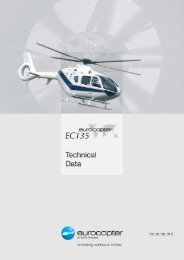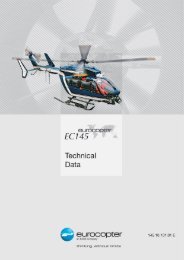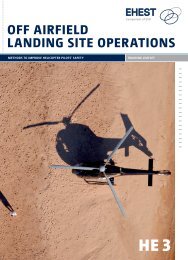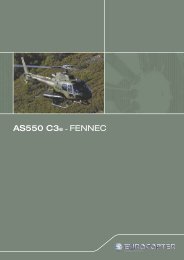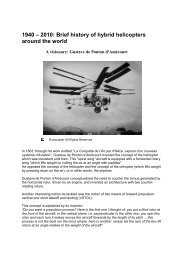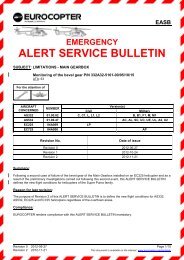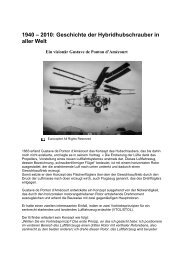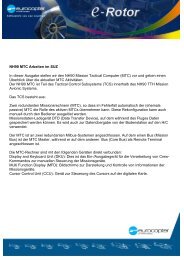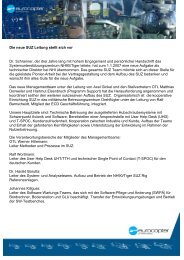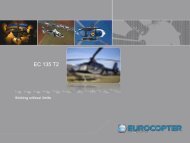LUXURY AND UTILITY COMBINED - Eurocopter
LUXURY AND UTILITY COMBINED - Eurocopter
LUXURY AND UTILITY COMBINED - Eurocopter
Create successful ePaper yourself
Turn your PDF publications into a flip-book with our unique Google optimized e-Paper software.
34 IN THE COCKPIT<br />
FISHTAIL AIR<br />
RESCUE<br />
ON THE ROOF<br />
OF THE WORLD<br />
With its capability to manoeuvre the world’s highest<br />
peaks, the Ecureuil AS350 B3 has become an essential<br />
ally when it comes to saving lives in extreme conditions.<br />
The recent longline rescue of three mountain climbers<br />
is a perfect example.<br />
On April 29,<br />
3 Spanish<br />
mountain<br />
climbers were<br />
rescued on Mt.<br />
Annapurna (8,091 m) in the Himalayas<br />
after having been stranded on the mountain<br />
for 36 hours due to bad weather. The<br />
climbers were rescued thanks to a new<br />
aerial service offered by two operators<br />
specializing in high-altitude rescues: the<br />
Nepalese company Fishtail Air and the<br />
Swiss company Air Zermatt. Since the<br />
ARTICLE: GLORIA ILLAS<br />
ROTOR JOURNAL - NO.87 - OCTOBER/NOVEMBER 2010<br />
service began in early spring, the Swiss<br />
team and the Ecureuil of Fishtail Air have<br />
performed a number of important missions<br />
at high altitudes. However, this rescue of<br />
the three Spanish climbers deserves special<br />
mention: not only because it took place<br />
at 6,900 meters, while the maximum certified<br />
altitude of the AS350 B3 Ecureuil is<br />
only 7,000 meters, but also because of the<br />
daring rescue method used.<br />
The operation, known as a “longline” or<br />
“human sling” rescue, is a risky business that<br />
requires a versatile and reliable helicopter,<br />
© Fishtail Air<br />
not to mention a seasoned and determined<br />
pilot with a sure hand. A rescuer is lowered<br />
from the helicopter on a cable, which<br />
may be extended up to 200 meters before<br />
reaching the climber. The injured climber<br />
is then attached to the cable and both are<br />
lifted away by the helicopter and transported<br />
to the nearest medical center. First used in<br />
the 1970s on the north face of the Eiger, this



